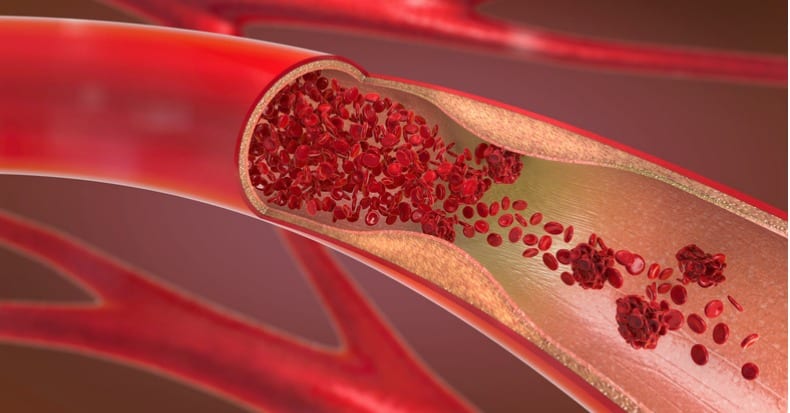For the older adult, pain that radiates into the leg is a common complaint. This process, called neurogenic claudication, occurs when the spinal cord and/or nerve roots are pinched as they exit the arthritic spine (a condition called spinal stenosis). However, there is another degenerative condition that can cause pain in the legs called peripheral vascular disease, and it can be quite challenging to differentiate between vascular and neurogenic claudication.
Peripheral vascular disease (PVD) is a slow, progressive narrowing, blockage, or spasm in a blood vessel that can affect any blood vessel outside of the heart including arteries, veins, or lymphatic vessels. This hardening of the arteries most often affects the legs and feet, although it can affect any organ, including the brain. The most common cause is atherosclerosis, which is the buildup of plaque inside the vessel wall that narrows the blood vessels in one or both legs. This depletes blood flow, and as a result, oxygen and nutrients can’t easily reach their intended destination. Other causes can include injury to the affected part, irregular anatomy of the muscles and ligaments, and infection.
The first symptom of PVD is typically painful leg cramping during exercise that is relieved with rest. This usually occurs after a certain length of walking time, which gets shorter as the disease progresses. This experience is similar to symptoms reported by patients with spinal stenosis, and as such, individuals with PVD may find themselves consulting with a doctor of chiropractic about what they suspect is a musculoskeletal condition. So how does a doctor of chiropractic differentiate leg pain from PVD from leg pain from spinal stenosis associated with dysfunction in the lumbar spine?
One study that administered questions to patients with either neurogenic claudication (NC) or vascular claudication (VC) found that specific symptoms could help in the diagnostic process. For example, if standing still does not trigger pain, NC could be ruled out. On the other hand, NC is likely if standing triggers or increases pain, bending or leaning forward relieves pain when symptoms are above the knees, and sitting provides relief. Patients with VC are more likely to experience leg pain down to the calf that is relieved by standing still. For a definitive diagnosis, a referral for more advanced diagnostics may be required.
Doctors of chiropractic frequently treat patients with spinal stenosis with neurogenic claudication and will refer a patient to a vascular specialist or their medical physician if PVD is suspected so the patient can be provided with appropriate care.
Thousands of Doctors of Chiropractic across the United States and Canada have taken "The ChiroTrust Pledge":
“To the best of my ability, I agree to
provide my patients convenient, affordable,
and mainstream Chiropractic care.
I will not use unnecessary long-term
treatment plans and/or therapies.”
To locate a Doctor of Chiropractic who has taken The ChiroTrust Pledge, google "The ChiroTrust Pledge" and the name of a town in quotes.
(example: "ChiroTrust Pledge" "Olympia, WA")
Content Courtesy of Chiro-Trust.org. All Rights Reserved.

